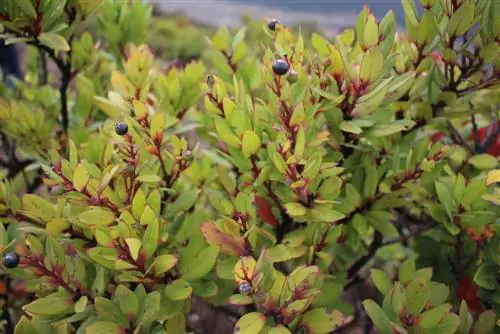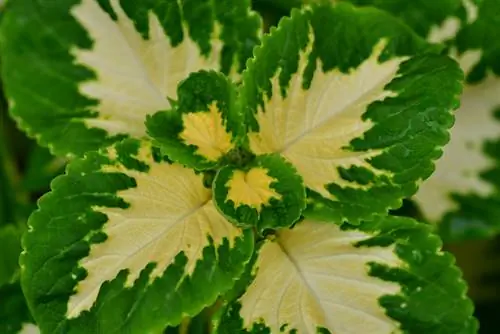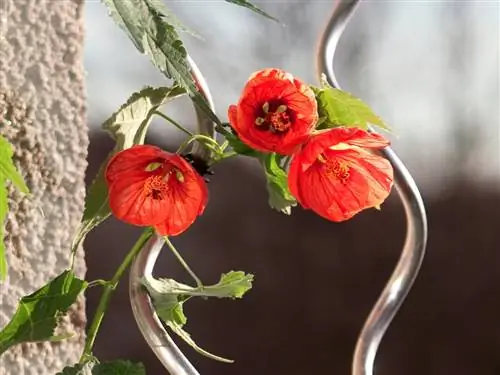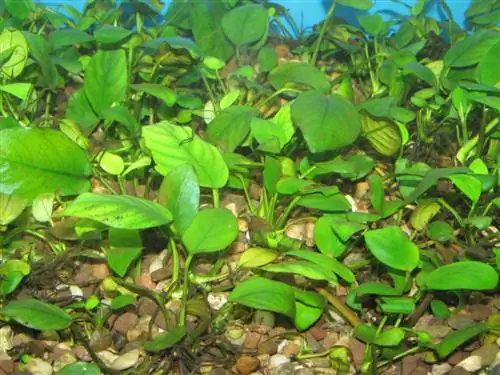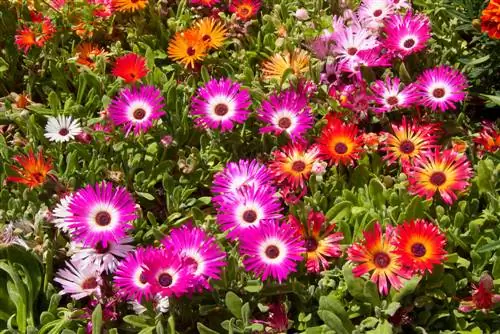- Author admin [email protected].
- Public 2023-12-25 17:45.
- Last modified 2025-01-23 11:22.
The evergreen myrtle makes an enchanting pot plant. Not only does it cover the richly branched shoots with delicate leaves, in summer it also decorates itself with flowers and then with edible fruits. Many attributes that stimulate the desire to reproduce. This is how it works.
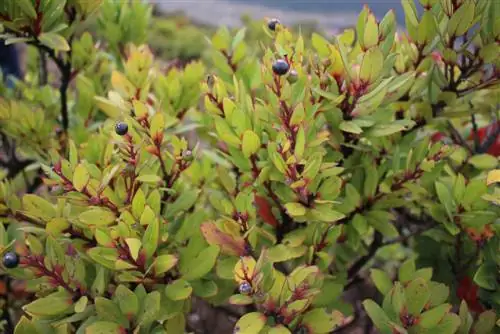
How can I propagate a myrtle?
The myrtle can be propagated by sowing seeds, rooting cuttings or moss. Sowing seeds requires patience, while cuttings offer the advantage of faster growth. Removal of moss is more complicated, but also possible.
Propagation is possible with these three methods
Myrtle is relatively easy to propagate in a private garden. If a specimen has already been introduced, a number of new plants can be propagated from it. As is almost always the case in the plant kingdom, several paths lead to the goal:
- Sowing seeds
- Rooting cuttings
- Moosen
Before you dare to propagate, you should know whether you can offer another myrtle a good life. If the location is not ideal, it will lose leaves.
Sowing seeds
This plant has been popularly called bridal myrtle for ages because its branches were often used as bridal decorations. This custom is still practiced sporadically today. It is therefore good to have the myrtle at home. You can buy seeds from well-stocked seed shops (€11.00 on Amazon) or get them from a wild plant. Here are the key data that promote sure success, whereby germination can last up to 8 weeks:
- freshly harvested seeds are most germinable
- so don't wait too long before sowing
- first remove the pulp (if you harvest your own)
- Dry seeds for 2-3 days
- Pre-soak seeds in warm water for 48 hours
- sprinkle onto moist substrate and press lightly
- cover with transparent foil (ventilate every few days)
- Keep the cultivation pot bright and warm
- ideal is 20 to 25 °C
Note:A myrtle that grows at home without the company of its own species can also provide seeds. But self-fertilization causes plants grown from these seeds to weaken. They are more susceptible to disease and have a shorter lifespan.
Young myrtles from cuttings
This type of propagation leads to success more quickly because cuttings provide a growth advantage. Cultivated myrtle in particular can produce new offspring more easily in this way than the wild variety. Cuttings can be cut all year round, but must be rooted indoors in cold months.
- cut or tear off a half-woody shoot
- it should be about 10 to 20 cm long
- Cutting surface must be cut diagonally
- place in water immediately after cutting
- Remove leaves that are in water
- Shorten the tip
Tip
How quickly a cutting takes root depends on two factors: its freshness and the ambient temperature. The fresher it is and the warmer it is for rooting, the faster it will form roots. Be patient in winter, it can take up to three months.
Moosen
A third way to propagate myrtle is to remove moss. A branch is first rooted and only then cut off from the mother plant. In order for roots to form, a piece of the bark is removed and the “bare” area is wrapped with moist moss. Since this method is comparatively complex and time-consuming, there is little to suggest its use.

